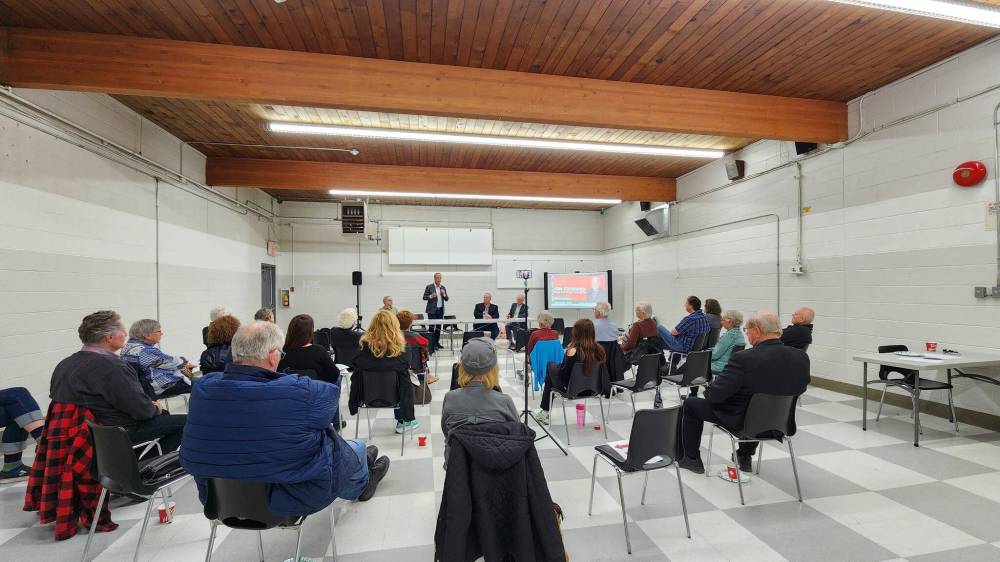Red River ecological corridor needed
Advertisement
Hey there, time traveller!
This article was published 31/05/2023 (884 days ago), so information in it may no longer be current.
Establishing and providing stewardship for ecological or wildlife corridors is a critical part of what needs to be done in Manitoba in the next few years.
Protecting islands of habitat is not enough, we need to provide corridors so that wildlife, including birds and mammals, have paths to join islands together. Such ecological corridors are also important as areas where habitat can be enhanced and trees can be planted as a way to address climate change and to decrease the risk of flooding (land which is treed holds water on the land longer so that floods are less likely).
For the last two years I have been involved in looking at the potential for an ecological corridor along the Little Saskatchewan River from Riding Mountain National Park to the Assiniboine River. Establishing an ecological corridor and providing stewardship for it is very different from establishing a provincial or national park. A large proportion of the land along the Little Saskatchewan River is privately owned and farmed. There are two First Nations along the Little Saskatchewan River and Métis have hunted along the river for many decades. An ecological corridor in this circumstance requires consultation with local landowners, municipalities, the First Nations, Métis and the local watershed district. It will also need to involve people in decision-making and it will require funding. Fortunately, the federal government has already announced funding for ecological corridors across Canada.

Supplied photo
River Heights MLA Jon Gerrard hosted a forum May 7 on the possiblity of designating an ecological corridor along the Red River.
In conversation with River Heights residents, I have found interest in an ecological corridor along the Red River from the U.S. Border to Lake Winnipeg. On May 7, I hosted a forum to further explore the idea.
Five panelists presented. Steve Strang, former managing director of the Red River Basin Commission, provided a perspective on the Red River north of Winnipeg. He emphasized the importance of the Netley-Libau Marsh and the need for action to improve the marsh habitat. John Orlikow, city councillor for River Heights-Fort Garry, talked about the situation within Winnipeg. He emphasized that the possibility of linking natural areas within the city is being explored
Ryan Sheffield, a trained botanist who is manager of the Pembina Valley Watershed District, spoke of working with farmers to protect and enhance natural areas.
Myrle Ballard, director of Indigenous science with Environment and Climate Change Canada spoke of the need to involve the Indigenous community early in the consideration of ecological corridors. Traditional knowledge and Indigenous science can be helpful in working with western science in the establishment and stewardship of such corridors.
Will Goodon, a minister with the Manitoba Métis Federation who sits on the executive committee of the MMF cabinet, spoke about the importance of ecological corridors and the ties that Métis have with the land.
I recently introduced Bill 214 in the Manitoba Legislature – The Ecological Reserves Amendment Act (Ecological Corridors). This bill, available on the Province of Manitoba website (www.manitoba.ca), provides for the development of an ecological corridor strategy for Manitoba. I welcome comments and suggestions as Manitoba moves forward to formally establish and designate ecological corridors in our province and to provide ongoing stewardship which involves the people who live along the corridors. I thank Nancy Chippendale for her help and encouragement in this effort.

Jon Gerrard
Jon Gerrard was Liberal MLA for River Heights from 1999 to 2023 and served as leader of the Liberal Party of Manitoba from 1998 to 2013.
Our newsroom depends on a growing audience of readers to power our journalism. If you are not a paid reader, please consider becoming a subscriber.
Our newsroom depends on its audience of readers to power our journalism. Thank you for your support.




